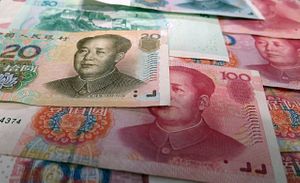Data released by China’s National Bureau of Statistics reveal that manufacturing activity contracted for the third consecutive month in February 2019, with the Purchasing Managers’ Index (PMI) falling below analysts’ expectations. With this, the official manufacturing PMI has reached its lowest levels since 2009 and China is facing a trying first quarter. Private measures of the PMI for the month, although they downplay the degree, corroborate the fact that manufacturing has been contracting consistently since November 2018. How China will choose to handle this slowdown has been a contentious subject. A reading of the economic data since the beginning of the year suggests that broad monetary stimulus is rearing its head once again, potentially bringing deleveraging objectives under a great deal of duress.
To be sure, China’s policymakers had been gradually loosening the liquidity valves since 2018. The People’s Bank of China (PBoC) reduced banks’ Reserve Requirement Ratio (RRR) — the minimum quantity of reserves that a commercial bank must hold instead of lending out — five times during the year. Even so, leaders declared at the time that China would follow a “prudent” monetary policy, an indication that it was committed to deleveraging and reform. This was affordable at the time. A large part of the modest economic slowdown witnessed in 2018 was, indeed, attributable to internal efforts to deleverage Chinese companies. Trade tensions with the United States had less of a hand in the slowdown — they led, rather, to a rise in China’s export orders throughout much of 2018 on account of companies’ frontloading efforts. Circumstances and expectations at the start of 2019, however, are quite different.
First, the ongoing trade war is beginning to take its toll as the frontloading effect wears off — the export orders subindex of China’s manufacturing PMI fell to a decade low in February 2019. Nor will the emerging repercussions of the trade tensions be limited to the short term. Even if the two sides were to reach a trade deal, the uncertainty engendered by the entire affair is bound to have adverse long-term effects, which China’s leaders are certainly aware of. The customary economic slack engendered by the Lunar New Year holidays adds to the list of encumbrances – nonmanufacturing PMI, while still in an expansionary phase, dropped somewhat in February 2019. Cognizance of these hindrances has inspired a more intense stimulus.
In January 2019, the PBoC injected $83 billion into the economy through bond repurchase agreements with commercial banks, the highest ever in a single day. Premier Li Keqiang also declared the Bank’s intention to reduce the RRR further in 2019. Economists have suggested that China may be induced to roll out “more aggressive” stimulus measures. This will almost definitely push up GDP growth, despite fears that China is facing a liquidity trap, wherein low business confidence stifles lending even as liquidity is increased. Given the amount of control the state enjoys in the economy, GDP growth on paper is assured. At the end of the day, any slack witnessed with respect to private companies and banks will be deliberately offset by state-owned companies and banks. As such, a more pertinent question to ask is whether China is, once again, setting itself on the path of excessive leveraging, investment inefficiency, and financial risk. It would definitely appear so, at least as far as the short-run is concerned.
New loans reached a record high in January 2019, even as commercial banks’ nonperforming loans rates reached a decade high of 1.89 percent at the end of 2018. More worryingly, interbank lending levels and total social financing, which are indicative of China’s elusive and risky shadow banking activities, have both recorded sharp increases in January 2019. Similarly, the amount of Wealth Management Products (WMPs), another type of risky shadow banking asset, increased by 22 percent. Based on these increases, it appears quite likely that some banks and corporates have incurred new loans in order to clear off old debt.
As such, it will ultimately fall, once again, to state-led infrastructure construction to offset the manufacturing slowdown and maintain growth at the politically mandated 6.5 percent level. While some relief will be forthcoming from the expansionary performance of the services sector, stimulus and state-driven injections through tax cuts and infrastructure spending will not abate, given the degree of uncertainty engulfing China’s economic prospects. While Chinese leaders are still conveying the message that monetary stimulus will be restrained in 2019, this is likely being done to prevent a loss of confidence and discourage capital flight. The evidence suggests that deleveraging has been jettisoned in 2019.
Uday Khanapurkar is a Research Assistant at the Institute of Chinese Studies, Delhi.

































